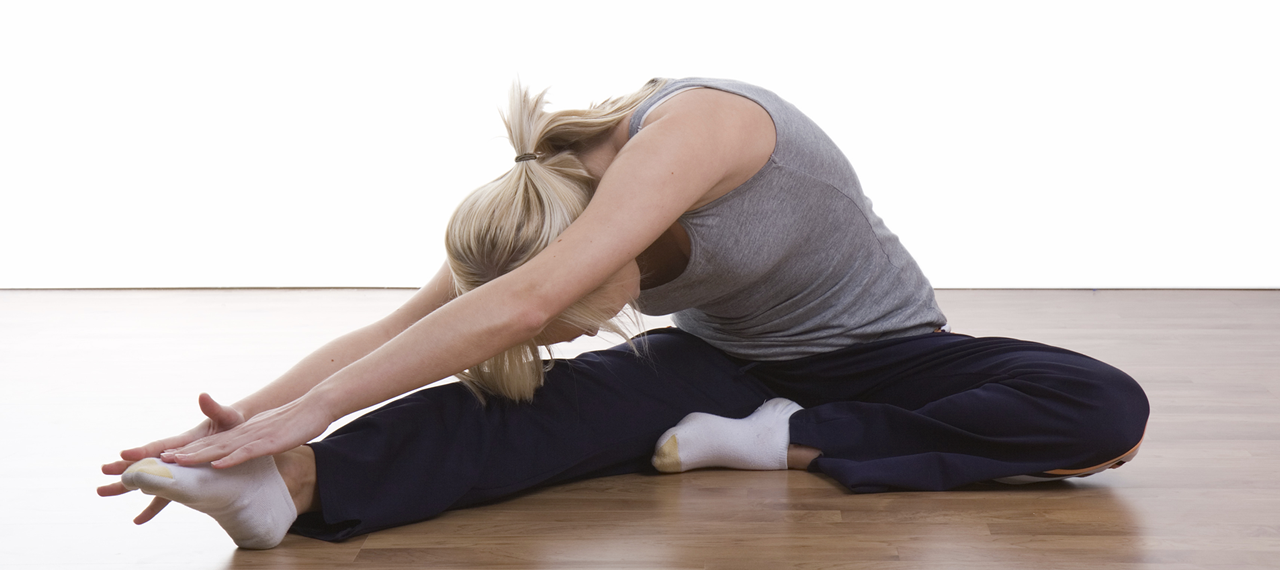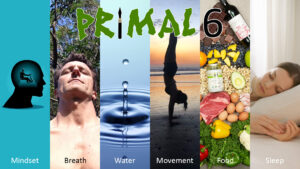Yes! Stretching, or flexibility, is the ability of your body’s joints to move through their full range of motion (ROM) to be able to do what they are designed to do. A joint’s ROM can be negatively affected from day to day activities such as bad posture and incorrect bending and lifting, as well as overusing muscles during exercise or sporting activities. Stretching is the type of movement used to help rectify these imbalances, thereby bringing the body back to a state of normality and symmetry and alleviating problems with your body. While many people are aware that stretching helps prevent injuries, there are many other lesser known but just as important reasons for stretching.
Here are some reasons and benefits of stretching
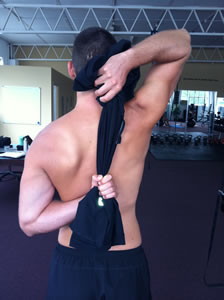
Shoulder Stretch
1/ Improved physical performance and decreased risk of injury
A flexible joint has the ability to move through a greater range of motion and requires less energy to do so. This greatly decreases your risk of injury and enables your body to move and perform much more efficiently.
2/ Reduced Muscle Soreness
Stretching helps alleviate the pain that occurs after exercise. Weight training especially can cause an effect on your muscles known as DOMS (Delayed Onset Muscle Soreness) whereby your muscles and tendons will be sore up to 48 hours after your workout. Regular stretching can reduce this pain.
3/ Reduced risk of lower back pain
A very high percentage of people have had at least one form of lower back pain. Posture is directly related to this. Improving your posture through stretching is very important to prevent simple things like your back seizing up when making the bed! Increasing the flexibility of your hamstrings, hip flexors, quadriceps, and other muscles attached to your pelvis, reduces this stress to your lower back. If you are a regular exerciser, stretching is an important addition to your program to help reduce tightness that can result from overuse of muscles that can further increase back pain.
4/ Increased Blood and Nutrients to Tissues
Stretching also increases blood supply and nutrients to joint structures. Stretching increases tissue temperature, which in turn increases circulation and nutrient transport. This allows greater elasticity of surrounding tissues and increases performance. Stretching also increases synovial fluid, which is a lubricating fluid, found in all joints that promote the transport of more nutrients to the joints’ articular cartilage.
5/ Improved Muscle Coordination
Another benefit is increased neuromuscular coordination, or the coordination of your nervous system (brain and spinal cord) and your muscular system. Studies show that nerve-impulse velocity (the time it takes an impulse to travel to the brain and back) is improved with stretching. This helps opposing muscle groups work in a more synergistic, coordinated fashion. In other words, you won’t be so uncoordinated!
6/ Relaxation
Not only does stretching decrease muscle soreness and increase performance, it also helps relax both body and mind. Pilates, Yoga and Zone exercises are forms of exercise dedicated to stretching and relaxing the body. Stretching can certainly be hard and uncomfortable when you first try it, but you will certainly feel the benefits of it the more you do it.
7/ Improved Posture
The most important thing that stretching can do for your body is to help improve your posture. Posture is affected by everything we do, like carrying bags on one side of the body, always talking on the telephone using the same ear, and standing casually with more weight on one leg. These habits affect the symmetry of your body. In sports, athletes that constantly use the same parts of the body like shot putters, baseball pitchers, and soccer players, are also at risk of injuries from tight overused muscles. Muscles end up being tighter on one side of the body than the other, resulting in pain and problems in your body that you may not think has anything to do with posture.
Think of things you may do every day, or exercises that you do every single time you workout, that may be slowly changing your posture for the worse. With exercise, men tend to constantly overwork the ‘mirror muscles’ i.e. the six-pack, biceps and chest. With women, the butt and triceps (back of the arm) are always given a thorough workout. In our day-to-day posture, sitting in front of computers, sleeping, and driving are things that have a profound affect on our posture and therefore tighten certain muscles up over time.
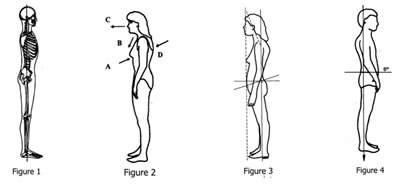
The diagram above shows 4 common types of postures from a side view. Figure 1 represents ideal posture. When hanging a string line from a ceiling and lining up the protruding anklebone to the string, an ideal posture should then find the middle of the knee, shoulder and ear in line with the string. In this position, a person’s internal organs, muscles and bones are in an ideal position. This posture allows a person to move, breath, digest and function correctly. Unfortunately, the other three postures represent the majority of people. Each example has different muscular imbalances that require specific strengthening and stretching in order to correct their posture.
An easy way to make yourself more familiar with ideal posture without using a stringline, is to stand against a wall with your heels, butt, back of your shoulders and head touching the wall (chin tucked in). Then step forward and hold that position for a few seconds. This is pretty close to what ideal posture should be. Do it regularly to remind yourself.
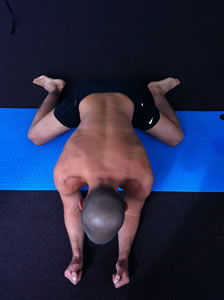
Groin Stretch
How can I get started with stretching?
1/ Consult a health professional that is familiar with stretching and doing postural assessments
This is important to determine which muscles to stretch and strengthen. Look for chiros, physios and specialised personal trainers that have certifications as a ‘CHEK Practitioner’. Visit www.chekinstitute.com for more information.
2/ Buy ‘How to Eat, Move and Be Healthy’.
If you are keen to learn about stretching yourself, get this book. It has a fantastic section all about stretching, in addition to a plethora of amazing information that will get you thinking differently about what is good and bad for your body.
3/ Listen to your body.
If you are familiar with a lot of stretches, start doing them regularly. Hold the stretches that feel the tightest, for a longer period of time and don’t avoid the stretches that you hate because they ARE so tight!
4/ Buy a foam roller and lie down along it regularly.
Many people have a very rounded upper spine with forward head posture. The spine has a strong ligament that runs down the front of it, that predominantly controls it’s shape. Ligaments don’t stretch like muscles do. To therefore change the shape of this ligament it is vital to spend a longer amount of time putting it in the exact opposite position that it is in the rest of the day. The foam roller is perfect for doing this.
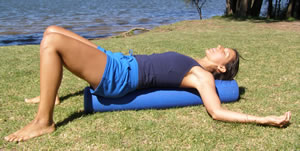
Stretching on a Foam Roller
REFERENCES
– Excerpts from C. Tackett, www.freeweightloss.com
– Posture diagram from ‘Exercise Coach’ Certification Manual, CHEK, Paul.
Is Stretching Really That Important? – August 2012
Recommended Purchases
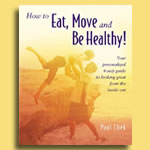 |
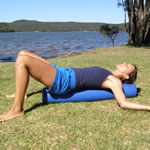 |
| Amazon.com Fishpond.com.au Bookdepository.com |
Foam Roller/Physio Roller www.performbetter.com www.aokhealth.com.au |

